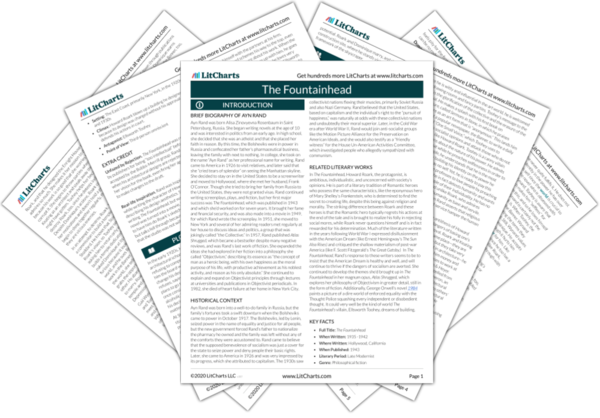An architect who professes to be nontraditional in his approach, Gordon L. Prescott belongs to the new wave of young architects in New York who lack originality and talent and are incorporated by into his group. Like Toohey, Prescott believes that one should defer one’s work to the . Also like Toohey, Prescott relies on obfuscation and vagueness to hide the fact that much of what he says means nothing. He testifies against at the trial, and he and are the two architects who suggest the changes to the Cortlandt building.
